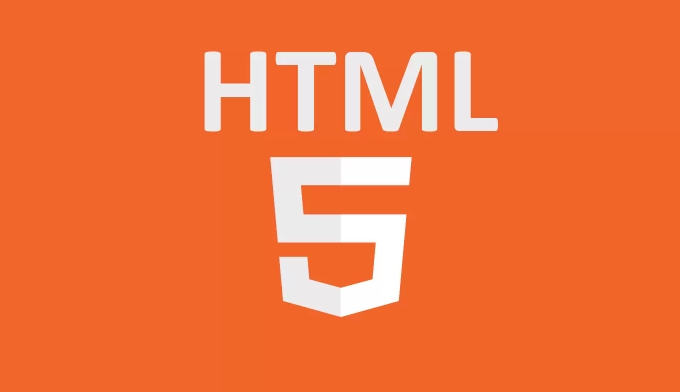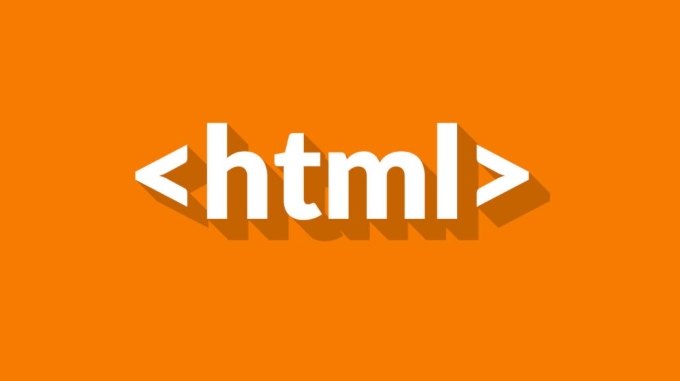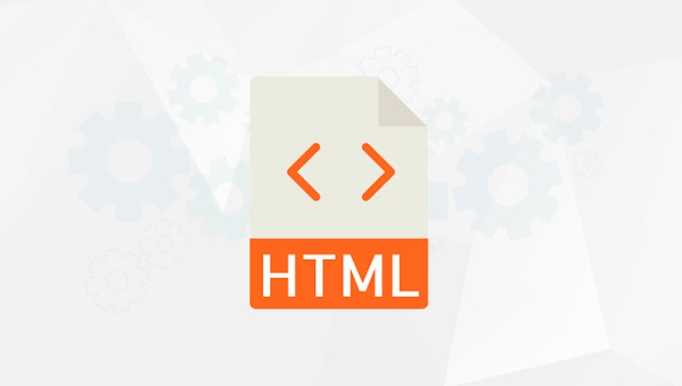SVG sprite maps reduce the number of HTTP requests and improve page loading speed by integrating multiple icons into one file. 1. SVG sprite is an SVG file containing multiple icons and wrapped in <symbol>. Each icon has a unique id and viewBox; 2. The creation method includes manual merging or automatic processing using Webpack, Gulp and other tools; 3. When using it, refer to the corresponding icons through the <use> tag. Make sure that the path is correct and the id is correct, and the style can be controlled through CSS; 4. Common problems include path errors, id spelling errors, viewBox missing or cache issues, which can be solved by checking network requests, structure resolution and updating file names.

The use of SVG sprites in HTML5 is actually a small trick to optimize performance. Simply put, it is to integrate multiple icons into one SVG file, and by positioning the required parts, reducing the number of HTTP requests, and speeding up the page loading speed.

What is SVG sprite?
SVG sprite is like the traditional CSS Sprite diagram, but it is implemented in the SVG format. You can understand it as an "icon repository" that contains multiple icons, each with its own coordinate position. When you need to use an icon, you just need to specify its position and size.
This approach is particularly suitable for situations where there are many small icons on the website, such as menu icons, button icons, etc. Compared to loading a single SVG file for each icon, using sprite can significantly reduce the number of resource requests.

How to create an SVG sprite?
There are several ways to create an SVG sprite. The common method is to merge multiple SVG icons into a file manually or with the help of tools. The final generated structure is roughly as follows:
<svg xmlns="http://www.w3.org/2000/svg" style="display: none;">
<symbol id="icon-home" viewBox="0 0 100 100">
<!-- Path data-->
</symbol>
<symbol id="icon-user" viewBox="0 0 100 100">
<!-- Path data-->
</symbol>
</svg>- Put this file on top of HTML or introduce external files (such as
<object>or<iframe>) - Each icon is wrapped in
<symbol>and assigned a uniqueid - Set
style="display:none"to prevent direct display
You can also use build tools such as Webpack and Gulp to automatically handle these merges, which are suitable for situations where there are a large number of icons in the project.

How to use icons in sprite in HTML?
Once the sprite is ready, you can refer to the icons inside through the <use> tag. The basic writing method is as follows:
<svg> <use href="sprite.svg#icon-home"></use> </svg>
There are several details to note:
- The
hrefpath must be correct to ensure that the browser can find the sprite file - If you have sprite content embedded in the page, you can omit the path part and write
#icon-homedirectly - You can control the icon's size, color and other style attributes through CSS
For example, if you want to make the icon red, you can write CSS directly like this:
svg {
width: 24px;
height: 24px;
fill: red;
}Frequently Asked Questions and Precautions
Sometimes you will find that the icon is not displayed, which may be due to the following reasons:
- Sprite file is not loading correctly or path is wrong
- The icon itself does not have a suitable
viewBoxset -
idname was misspelled when using<use> - Browser caches old version of sprite files
How to solve these problems:
- Check the network panel to see if the sprite file is loaded successfully
- Make sure every
<symbol>has a unique and correctid - Use browser developer tools to see if the SVG structure is correctly parsed
- Clear the cache or update the file name with a version number (such as
sprite.svg?v=1.1)
Basically that's it. It is actually not difficult to use SVG sprite well, but you need to pay attention to details, especially in maintaining icon collections and path management. Well done, it is a lightweight and flexible icon solution.
The above is the detailed content of Using SVG sprites in HTML5. For more information, please follow other related articles on the PHP Chinese website!

Hot AI Tools

Undress AI Tool
Undress images for free

Undresser.AI Undress
AI-powered app for creating realistic nude photos

AI Clothes Remover
Online AI tool for removing clothes from photos.

Clothoff.io
AI clothes remover

Video Face Swap
Swap faces in any video effortlessly with our completely free AI face swap tool!

Hot Article

Hot Tools

Notepad++7.3.1
Easy-to-use and free code editor

SublimeText3 Chinese version
Chinese version, very easy to use

Zend Studio 13.0.1
Powerful PHP integrated development environment

Dreamweaver CS6
Visual web development tools

SublimeText3 Mac version
God-level code editing software (SublimeText3)
 Using ARIA attributes with HTML5 semantic elements for accessibility
Jul 07, 2025 am 02:54 AM
Using ARIA attributes with HTML5 semantic elements for accessibility
Jul 07, 2025 am 02:54 AM
The reason why ARIA and HTML5 semantic tags are needed is that although HTML5 semantic elements have accessibility meanings, ARIA can supplement semantics and enhance auxiliary technology recognition capabilities. For example, when legacy browsers lack support, components without native tags (such as modal boxes), and state updates need to be dynamically updated, ARIA provides finer granular control. HTML5 elements such as nav, main, aside correspond to ARIArole by default, and do not need to be added manually unless the default behavior needs to be overridden. The situations where ARIA should be added include: 1. Supplement the missing status information, such as using aria-expanded to represent the button expansion/collapse status; 2. Add semantic roles to non-semantic tags, such as using div role to implement tabs and match them
 Integrating CSS and JavaScript effectively with HTML5 structure.
Jul 12, 2025 am 03:01 AM
Integrating CSS and JavaScript effectively with HTML5 structure.
Jul 12, 2025 am 03:01 AM
HTML5, CSS and JavaScript should be efficiently combined with semantic tags, reasonable loading order and decoupling design. 1. Use HTML5 semantic tags, such as improving structural clarity and maintainability, which is conducive to SEO and barrier-free access; 2. CSS should be placed in, use external files and split by module to avoid inline styles and delayed loading problems; 3. JavaScript is recommended to be introduced in front, and use defer or async to load asynchronously to avoid blocking rendering; 4. Reduce strong dependence between the three, drive behavior through data-* attributes and class name control status, and improve collaboration efficiency through unified naming specifications. These methods can effectively optimize page performance and collaborate with teams.
 HTML5 video not playing in Chrome
Jul 10, 2025 am 11:20 AM
HTML5 video not playing in Chrome
Jul 10, 2025 am 11:20 AM
Common reasons why HTML5 videos don't play in Chrome include format compatibility, autoplay policy, path or MIME type errors, and browser extension interference. 1. Videos should be given priority to using MP4 (H.264) format, or provide multiple tags to adapt to different browsers; 2. Automatic playback requires adding muted attributes or triggering .play() with JavaScript after user interaction; 3. Check whether the file path is correct and ensure that the server is configured with the correct MIME type. Local testing is recommended to use a development server; 4. Ad blocking plug-in or privacy mode may prevent loading, so you can try to disable the plug-in, replace the traceless window or update the browser version to solve the problem.
 Embedding video content using the HTML5 `` tag.
Jul 07, 2025 am 02:47 AM
Embedding video content using the HTML5 `` tag.
Jul 07, 2025 am 02:47 AM
Embed web videos using HTML5 tags, supports multi-format compatibility, custom controls and responsive design. 1. Basic usage: add tags and set src and controls attributes to realize playback functions; 2. Support multi-formats: introduce different formats such as MP4, WebM, Ogg, etc. through tags to improve browser compatibility; 3. Custom appearance and behavior: hide default controls and implement style adjustment and interactive logic through CSS and JavaScript; 4. Pay attention to details: Set muted and autoplay to achieve automatic playback, use preload to control loading strategies, combine width and max-width to achieve responsive layout, and use add subtitles to enhance accessibility.
 Using HTML5 Semantic Elements for Page Structure
Jul 07, 2025 am 02:53 AM
Using HTML5 Semantic Elements for Page Structure
Jul 07, 2025 am 02:53 AM
Using HTML5 semantic tags can improve web structure clarity, accessibility and SEO effects. 1. Semantic tags such as,,,, and make it easier for the machine to understand the page content; 2. Each tag has a clear purpose: used in the top area, wrap navigation links, include core content, display independent articles, group relevant content, place sidebars, and display bottom information; 3. Avoid abuse when using it, ensure that only one per page, avoid excessive nesting, reasonable use and in blocks. Mastering these key points can make the web page structure more standardized and practical.
 Explaining the HTML5 `` vs `` elements.
Jul 12, 2025 am 03:09 AM
Explaining the HTML5 `` vs `` elements.
Jul 12, 2025 am 03:09 AM
It is a block-level element, suitable for layout; it is an inline element, suitable for wrapping text content. 1. Exclusively occupy a line, width, height and margins can be set, which are often used in structural layout; 2. No line breaks, the size is determined by the content, and is suitable for local text styles or dynamic operations; 3. When choosing, it should be judged based on whether the content needs independent space; 4. It cannot be nested and is not suitable for layout; 5. Priority is given to the use of semantic labels to improve structural clarity and accessibility.
 Accessing User Location with HTML5 Geolocation API
Jul 07, 2025 am 02:49 AM
Accessing User Location with HTML5 Geolocation API
Jul 07, 2025 am 02:49 AM
To obtain user location information, you must first obtain authorization. When using HTML5's GeolocationAPI, the first step is to request user permission. If the user refuses or fails to respond, an error should be handled and a prompt should be given; after successful authorization, the Position object includes coords (latitude, longitude, etc.) and timestamp; you can use watchPosition to monitor location changes, but you need to pay attention to performance issues and clear the listener in time. 1. Authorization requires the user to explicitly allow it to trigger the getCurrentPosition method request; 2. Process error.code when rejected or errored and prompt the user; 3. After success, position.coords provides location data; 4.watc
 Saving the content of an HTML5 canvas as an image.
Jul 08, 2025 am 02:13 AM
Saving the content of an HTML5 canvas as an image.
Jul 08, 2025 am 02:13 AM
Yes, you can save its contents as an image using the HTML5Canvas built-in toDataURL() method. First, call canvas.toDataURL ('image/png') to convert the canvas content to a base64 string in PNG format; if JPEG or WebP format is required, the corresponding type and quality parameters such as canvas.toDataURL ('image/jpeg', 0.8) can be passed in. Then you can achieve download by creating a dynamic link and triggering a click event: 1. Create an element a; 2. Set the download attribute and href as image data; 3. Call the click() method. Note that this operation should be triggered by user interaction.






